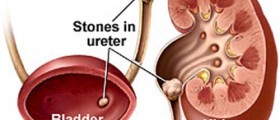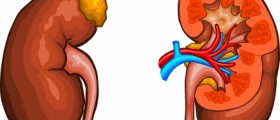What is Kidney Stone Surgery?
Stones in the urinary tract are solid masses that are also known as calculus or urolitiasis in medical terms. There are several theories that explain the nature of the stones' development, although none of those gives a complete explanation. That is why kidney stones could be labeled as a multifactorial disease.
Some of the factors that contribute to the appearance of kidney stones are general, such as:
- A dysfunction of calcium metabolism
- Problems with the metabolism of oxalateuric acid and certain amino acids
- Unhealthy eating habits, including a lot of so-called bad calories (junk foods high in sugar and fat)
- Excessively high amounts of vitamin D in the organism

Some of the local factors related specifically to the urinary tract that increase the risk of kidney stone formation are:
- The presence of foreign matter
- Infections caused by bacteria
- A urease inflammation process in the kidney
- Physical trauma caused by mechanical effects (from car accidents for example)
The structure of kidney stones includes an inorganic, or crystal components that usually makes up about 95% of the stone and organic matter (5%). The inorganic part of the kidney stone consists of calcium oxalate, calcium phosphate, uric acid, or urates. There are three phases in the formation of kidney stones:
- The creation of a crystalloid core (nucleus)
- The growth of this nucleus into crystals
- Adhesion of crystals into final stones, which may continue to grow in size.
What Symptoms do Kidney Stone Cause?
Kidney stones can be localized in any part of the kidney and their size varies. The typical symptoms of kidney stones are pain in the kidney area, where the pain's intensity depends on the size and mobility of the kidney. Pain may be followed by nausea and vomiting, but sometimes painless hematuria or blood in the urine without any pain while urinating may occur, too.
Treatment of Kidney Stones
Treatment includes pain management, while the final goal is the elimination of the stones. Most often, analgesics are used for dealing with the pain. If there is no spontaneous reduction and disappearing of the stones, the kidney stones must be either simply destroyed or removed by surgery.
- Though stone-free rate in percutaneous nephrolithotomy can vary dependent on the stone location, and size, as reported in the literature, it increases up to 90 percent. In the American Urological Association guideline, this rate has been given as 78 percent.
- Intrarenal access through subcostal approach is frequently preferred method in that it is easier to apply with lower complication risk, and also it allows a wider range of nephroscopic manipulation within the renal collecting system. In only 5 cases, access through supracostal approach was used. Any major complication was not encountered in these cases. Still capability of the surgical equipments is another important factor effecting the stone-free rates. It has been reported that stone-free rates increased up to 95% with the use of flexible nephroscope, and the need for an additional intervention decreased.
- In recent years, with the use of flexible ureterorenoscopes which provide higher imaging quality, and increased mobility, it has become possible to reach the most remote part of the renal pelviocalyceal system through retrograde route. Thanks to developments of holmium laser systems, they have become an important alternative to retrograde surgical interventions. Retrograde intrarenal surgery is a safe, and successful minimally invasive treatment modality. In the literature, stone-free rates reported in the literature for retrograde intrarenal surgery range between 50, and 90 percent.
- Open stone surgery comprise nearly 1.5% of all stone surgeries performed in developed countries, however in developing countries its rate changes between 26, and 3.5 percent. In recent years, though its field of application has narrowed, concurrent open stone surgery has been performed in cases with comorbidities as complicated stone burden, ureteropelvic junction stenosis, infundibular narrowing, and calyceal diverticula, morbid obesity or inadequacy of minimally invasive therapies in the management of stone disease. Open stone surgery is not recommended directly in international guidelines. In the European Association of Urology guidelines laparoscopic intervention is recommended in suitable cases, before resorting to open surgery.
The disintegration of kidney stones can be achieved in three ways.
The first is with the help of lithotripsy, an ESWL process that can destroy all types of stones except those that are made of cystine.
The second treatment option is called percutaneous nephrolithotomy, and it is based on creating a small cut on the patient's back, thus allowing a surgeon to remove the stone using a nephroscope.
In some cases, kidney stones will have grown so big that they consume the entire kidney tissue (coral stones) and then a combination of ESWL and nephrolithotomy is needed. This type of treatment can deal effectively with cystic stones.
The third type of treatment is ureteroscopy, when stones are located in the urinary tract.
How Long Does It Take to Recover From Kidney Stone Removal?
After the surgery, the initial recovery time is only a couple of days, and after that period patients are released from hospital, and recovery is continued at home.
Treatment after these types of procedures takes a couple of weeks. In that period, certain measures are taken so that kidney stones do not appear again. Those include intake of large amounts of fluids, urine is checked on regular basis in order to prevent any infection, and the patient learns how to live a healthy post-surgery life (with an emphasis on healthy eating habits, regular physical activity and hydration). The patient’s behavior, which requires strictly following doctor’s orders, is also very important and can make recovery time shorter.

















Your thoughts on this
Loading...